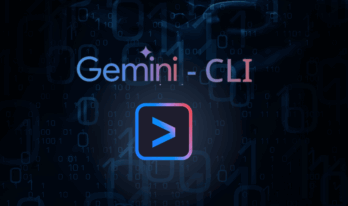SaaS is a distribution model wherein the third party is trusted with the responsibility of hosting applications and makes them available for the customers with the help of the internet.
Open-source solutions are opted for by software businesses for their specific tasks, which are not the primary businesses of software developers.
Other reasons for opting for open-source solutions are mentioned as under:
-
- Flexibility: Open source solutions help in the customization of codes.
- Improved Quality: Communities help in improving bugs in code.
- Reducing Risks: Elimination of opting for the heavy investments for buying software.
Best Open Source SaaS Solutions
OpenStack is a set of tools that are used for managing cloud platforms.
It can be used for both public as well as private clouds.
It allows users in the deployment of virtual machines through IaaS.
Being open-source has the privilege of a dedicated support community, wherein any user can make changes to the source code and update it back to the community.
This thus helps in making it the most secure and robust product.
Features:
-
- Unlimited storage.
- Shared file system.
- Container plugins.
- Load balancer.
- Container deployment.
Price
Need to contact vendor for quote based plan.
It is a cloud computing platform mainly used for the management of data centres.
OpenNebula is a feature-rich solution efficient for public, private, and hybrid cloud platforms.
Its deployment is explained as under:
Master node
It is a single gateway responsible for the scheduling and the submission of jobs to the machines.
It manages all virtual machines running on various clusters.
It allows you to add new machines to your clusters.
Worker node
This node is mainly responsible for making the availability of all computing resources for executing the jobs from the master node.
Various machines like VMware, Xen, or KVM can be deployed because of the worker nodes.
Storage
Three datastores are involved in OpenNebula.
It includes system data stores, image data stores, and file data stores.
-
- System data store the images for running virtual machines.
- Image data stores the disk images.
- For regular files, file data stores are used.
Features:
-
- Interface: Multiple languages API and simple GUI for users.
- Platform: Packages for Linux distributions and is fully platform-independent.
- Security: Login token facility availability along with fine-grained auditing.
- Licensing: Open-source software released under the Apache License.
- Virtual infrastructure management: Fine-grained multi-tenancy, powerful hooking system.
Price:
OpenNebula offers commercial support at three levels
-
- Basic: €2,000 ($2,500); it includes additional cost per physical server at about €200 ($250) and maximum cloud per cloud instance €24,000 ($30,000).
- Standard: €4,000 ($5,000); it includes additional cost per physical server at about €400 ($500) and maximum cloud per instance €48,000 ($60,000).
- Premium: €6,000 ($7,500); it includes additional cost per physical server at about €600 ($750), maximum cost per cloud instance €72,000 ($90,000).
Also Read: Understanding the Advantages and Disadvantages of SaaS
It is an open-source cloud orchestration framework.
It helps in the automation of the entire life cycle of an application.
Cloudify enables users to deploy the application in two ways:
-
- By opting for CLI only.
- By opting for the Cloudify manager.
Application configurations are defined through blueprints that are developed on YAML DSL configuration files.
These blueprint files have complete information regarding the application lifecycle, starting from installation to its monitoring.
Cloudify is dependent on these blueprint files for the execution of the plans in the cloud.
These blueprint files describe the configurations of each component along with their binary locations and installations.
Features
-
- Local blueprints.
- IT governance and security.
- Blueprint modelling.
- TOSCA orchestration.
- Built-In node types.
Price
Need to contact vendor for quote based plans.
It is one among the family of containerization software developed by Red Hat.
OpenShift container platform is based upon the Kubernetes.
OpenShift Online is offered as a software-as-a-service.
OpenShift includes container images allowing users to deploy frameworks and databases with one click.
Its user interface allows users to monitor the containers as well as their health.
Some of the products of OpenShift are mentioned as under:
-
- OpenShift Origin: Supported by application lifecycle management functionality and DevOps tools.
- OpenShift Online: Runs on AWS
- OpenShift Dedicated: It is Red Hat’s private cluster offering, available on AWS, GCP, Microsoft Azure.
Features
-
- Continuous integration and release management.
- Multiple environment support.
- Choice of cloud infrastructure.
- Pod autoscaling.
- Standardized developer workflow.
Price
OpenShift offers a free trial, however, with some extra features, its starting price is $50 per month.
The price provides features like:
-
- Deployment on web-based, cloud, SaaS.
- Webinar and documentation training
- Online and business hour support.
It is open-source cloud computing software.
It helps in creating and managing Infrastructure cloud services.
It supports various hypervisors like VMware, Xen Cloud Platform (XCP) and Microsoft Hyper-V.
It is used by both public cloud vendors and organizations running their own private clouds.
CloudStack users have the ability to exhaust the maximum advantage of cloud computing for faster deployment of services and systems to end-users.
Features
-
- Powerful API: Well documented and extensible.
- Domains and delegated administration: Divides cloud resources and distribute the management of these domains to others.
- Alerts and notifications: Receives updates regarding machine failures or certain physical resource thresholds.
- Event logs: User interactions via CloudStack UI or API are recorded as events.
- Secure single sign-on: Integrate existing applications with CloudStack management user interface through secure single sign-on for better user experience.
Price
Need to contact vendor for quote base price.
Conclusion:
Many factors need to be considered before opting for the deployment method. The information provided above will help users in understanding the right solution for business platforms.
You May Also Like To Read:
Understanding LAMP Stack and Its Applications
Top 7 Kubernetes Use Cases and Examples
SaaS vs. PaaS: Understand the Difference




